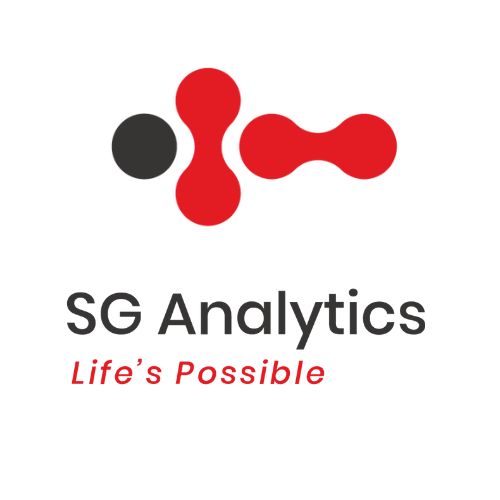- Resources
- Blog
- What is Data Architecture - Complete Guide
What is Data Architecture - Complete Guide
Data Architecture
Contents
May, 2025
Data today is driving modern businesses, enabling personalized customer experiences and innovative solutions. However, the challenge for organizations is not the availability or collection of data but rather storing it securely and making it accessible for strategic decisions.
This is where data architecture is essential. It presents a structured framework enabling organizations to govern data. Whether you are a retailer in need of real-time inventory updates or a tech giant, the exemplary data architecture is essential, not optional.
It assists in documenting the organization’s data assets, data architecture maps how data flows through systems, providing a blueprint for managing data. The goal is to ensure data is appropriately handled and meets business requirements for information to drive decision-making.
Let’s explore the fundamentals of data architecture, its types, and best practices.
What is Data Architecture?
Data architecture is how an organization handles data, from where it is stored and secured to how it is processed, accessed, and used. By designing secure and accessible data pipelines, data architecture helps ensure that data is available and usable for decision-making.
Today, organizations produce, collect, and manage large volumes of data. However, without a unified architecture, this data becomes a liability instead of an asset. Data architecture design is often the first step in the data management process. However, despite their foundational nature, data architectures are not set in stone and must be updated as data and business needs change. Thus, data architecture work is an ongoing task for data management teams. Data architecture is closely related to data modeling, which creates diagrams of data structures and relationships between data elements. However, they are separate data management disciplines.
While data architecture supports operational applications, it helps define the underlying data environment for business intelligence along with advanced analytics. The output includes a multilayer framework for management tools and standards for collecting, transforming, and storing data. It is a testament to how businesses have stepped up to meet bigger challenges with more innovative frameworks and bold innovations.
Why are Data Architectures Important?
A well-designed data architecture is an integral part of the data management process. It supports data integration and quality modification efforts, as well as data engineering and preparation. It further enables effective data governance along with the development of data standards. These, in turn, help organizations ensure that their data is accurate and consistent.
A data architecture is the foundation of a comprehensive data strategy that supports business goals. Business strategies increasingly depend on data, and data management is too important to leave to individuals. In addition to the data itself, data catalogs, data management tools, different analytics techniques, collaboration, and documented goals are key data strategy components.
Along with building a data architecture, the main aspects of developing a strong data strategy include the following:
- Identifying goals that the data assets of an organization must support.
- Assessing the state of processes.
- Proposing upgrades to the data management environment.
- Planning and communicating a roadmap for data architecture and data strategy.
Characteristics of a Modern Data Architecture
The principles of modern data architectures include alignment with data governance and regulatory compliance processes, assistance for multi-cloud environments, and efficient deployments to avoid unnecessary data platforms. A data architecture must also ensure that data is available for planned analytics.
Common characteristics of well-designed data architectures include:
- A business-driven focus that aligns with organizational strategies and data requirements.
- Flexibility and scalability enable different applications as well as meet business needs.
- Security protections to restrict unauthorized data access.
Instead, a data architecture is a conceptual infrastructure represented by a set of diagrams and documents, which data management teams use to guide technology deployments and data management.
With technology elements being incorporated, a data architecture includes:
- Data warehouses, data lakes, and data lakehouses.
- Cloud systems, storage, and applications.
- AI and machine learning models.
- Data streaming and real-time analytics.
- Data pipelines are used to deliver the required data to users.
Benefits of Data Architecture
Organizations can gain measurable outcomes by prioritizing a well-crafted data architecture, from better compliance to higher cost savings.
- Enhanced Data Accessibility
A well-designed data architecture is the forerunner to data democratization. Organizations that want to achieve successful data democratization must break down silos and make data accessible to authorized stakeholders regardless of their technical expertise. Well-defined data models help ensure that data is structured in a user-friendly way. A key challenge for users is determining the right data with active metadata.
- Improved Consistency and Data Quality
A well-crafted data architecture integrates proper mechanisms to ensure the consistent quality of data. It employs schema standardization to create uniformity in data storage. Another critical aspect is metadata-driven governance, which helps track the source to maintain consistency even if the data changes.
- Scalability
A well-designed data architecture can achieve scalability while maintaining flexibility through dynamic resource allocation and distributed systems. It comprises approaches where different system parts are independent and easy to replace. This allows the user to add new tools without disrupting the existing workflows. Flexible systems also incorporate schema-on-read, enabling raw data to be stored without organizing it first. This further helps adapt to new data types without reconfiguring the entire setup.
- Support for Advanced Analytics and AI
Advanced analytics and AI need a scalable framework that manages structured, semi-structured, and unstructured data. A robust data architecture framework implements centralized repositories like data lakes and data warehouses to eliminate silos. Real-time pipelines ensure that clean data is ready for analysis. Processing frameworks further allow AI models to train on a high volume of data, enabling parallel processing of large datasets.
- Cost Effectiveness
Setting up a robust data architecture is a cost-intensive process that involves investments in tools, infrastructure, and skilled resources. However, it contributes to cost efficiency by optimizing resource utilization and reducing redundancies. One of the most significant ways a good data architecture helps achieve cost efficiency is by eliminating data silos. In many organizations, these data silos often lead to unnecessary data duplication, massively increasing storage and processing costs. With a unified data architecture, organizations can merge data from disparate sources into central repositories.
Data architecture equips leaders to derive insights in an organized manner. Streamlining insight generation equips organizations to make faster, more informed decisions, directly impacting revenue and costs.
Types of Data Architecture
Data architecture and its underlying components are essential in building a scalable and reliable data infrastructure to support growth and innovation. Different types of data architecture serve different needs. Each has unique components and purposes. Here is a breakdown of the primary types of data architectures in an organization today:
- Data Warehousing Architecture
This architecture centralizes structured data from numerous sources in a single place for analysis and reporting. Key components include data warehouses, ETL tools, and BI platforms. It is perfect for companies focused on historical data analysis and reporting.
- Data Lake Architecture
Data lakes use cloud storage solutions to store raw, unstructured data. Critical for big data analytics, AI, and machine learning, data lakes require strong metadata management in order to ensure efficient data integration.
- Data Mesh
Data mesh decentralizes data ownership across different domains. Every team is accountable for its data pipelines, making this architecture a good fit for organizations.
- Event-driven Architecture (EDA)
EDA is characterized by real-time processing and immediate responses. It is common in IoT, finance, and industries where immediate action is important.
- Hybrid Data Architecture
The hybrid architecture incorporates data lakes, data warehouses, and real-time processing elements to meet diverse needs. It includes both cloud and on-premises solutions, offering adaptability and flexibility.
- Federated Data Architecture
With a federated approach, data stays in its original location but can be accessed through virtual integration. This helps reduce data duplication and offers access to complex data sets.
- Cloud Architecture
Cloud data architecture integrates cloud-native tools to store, process, and analyze data. The key components include data storage, processing, integration, and visualization.
Characteristics of Modern Data Architecture
Today, organizations are building their roadmaps for tomorrow’s applications, including AI, blockchain, and the Internet of Things (IoT). They demand a modern data architecture to support data requirements. Some of the top characteristics of modern data architecture are:
- Cloud-native and cloud-enabled to ensure that data architecture can benefit from the cloud’s elastic scaling and high availability.
- Robust, scalable, and portable data pipelines that combine cognitive analytics and real-time integration into a single framework.
- Seamless data integration uses standard API interfaces.
- Real-time data enablement, including validation, management, and governance.
- Optimized to balance cost and simplicity.
Popular Data Architecture Frameworks
Organizations employ standardized frameworks to design and implement data architectures. Data architecture can be drawn from popular enterprise architecture frameworks, like TOGAF, DAMA-DMBOK 2, and the Zachman Framework for Enterprise Architecture
- DAMA-DMBOK2
The Data Management Body of Knowledge (DMBOK) is a data framework designed by DAMA International – a professional association for data managers. DAMA-DMBOK2 addresses data architecture and other data management disciplines.
- TOGAF
Designed in 1995 and updated several times, the TOGAF is an enterprise architecture framework that encircles data architecture design and roadmap development. Developed by The Open Group, TOGAF initially stood for The Open Group Architecture Framework but is referred as the TOGAF Standard.
- The Zachman Framework
An ontology framework, the Zachman Framework integrates a six-by-six matrix of rows and columns, describing an enterprise architecture. It does not include an implementation methodology but serves as the basis for architecture.
Optimizing Data Management with SG Analytics
Today, data architecture is the cornerstone for organizations seeking to optimize their data management. A structured framework, data management guides how data is integrated and governed, ensuring alignment with the organization’s strategic and business objectives.
Enterprises are moving beyond the AI hype and harnessing its potential to transform their business operations. SGA combines expertise in data engineering, data science, and machine learning with extensive domain experience to enable enterprises to modernize their data foundations and transform enterprise data into actionable insights. These accelerators empower enterprises to unlock unprecedented value from their data.
FAQs – Data Architecture
Data architecture is a framework for data storage, security, processing, and access within an organization. A robust data architecture makes data accessible, turning it into a strategic asset rather than a liability.
A solid data architecture enhances data accessibility, quality, and consistency across the organization. It further enables scalability and flexibility as the business grows, improving security and compliance.
Key data architecture frameworks are the Zachman Framework, TOGAF, DAMA-DMBOK, and NAF.
Related Tags
Data ArchitectureAuthor

SGA Knowledge Team
Contents